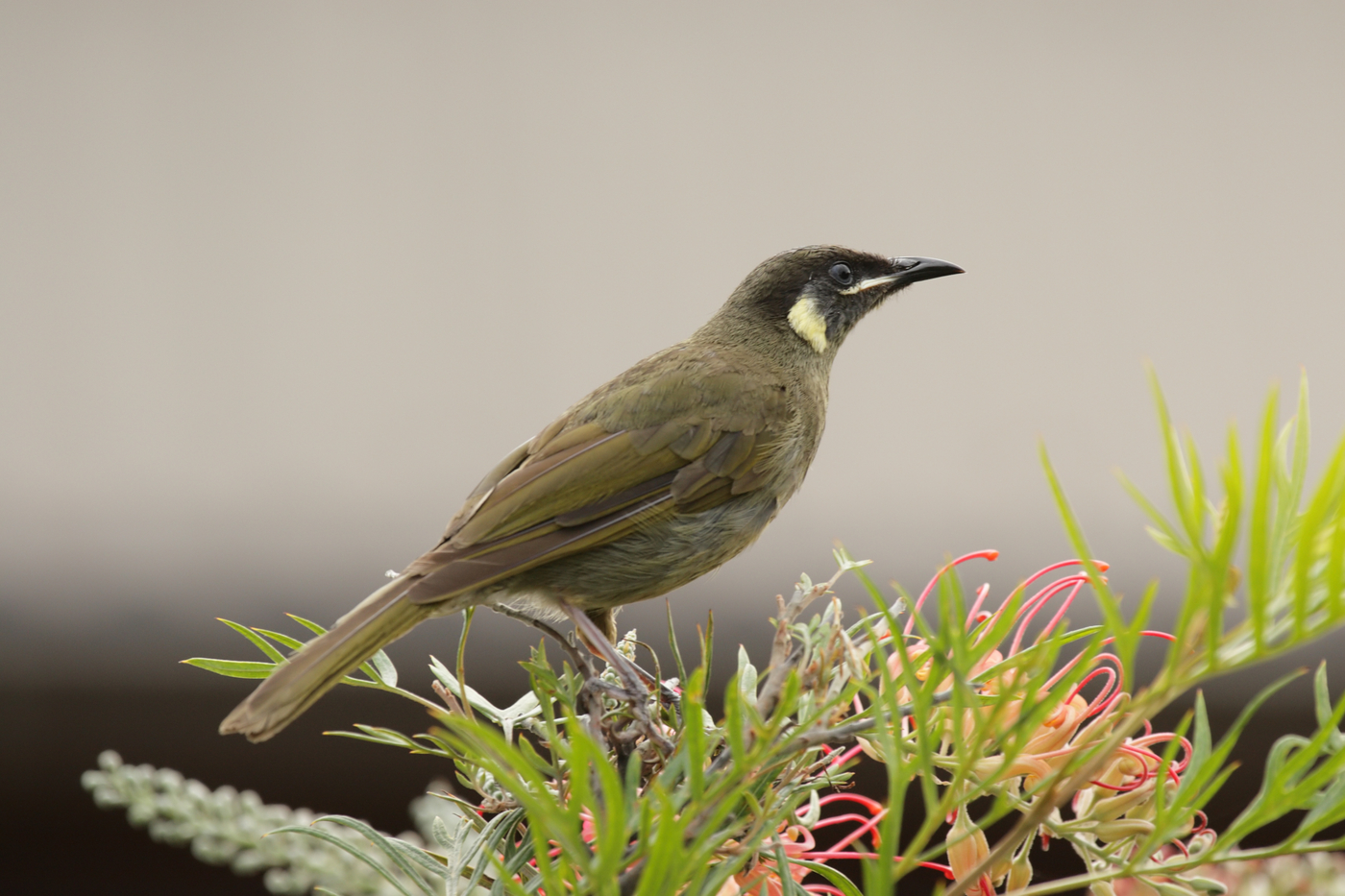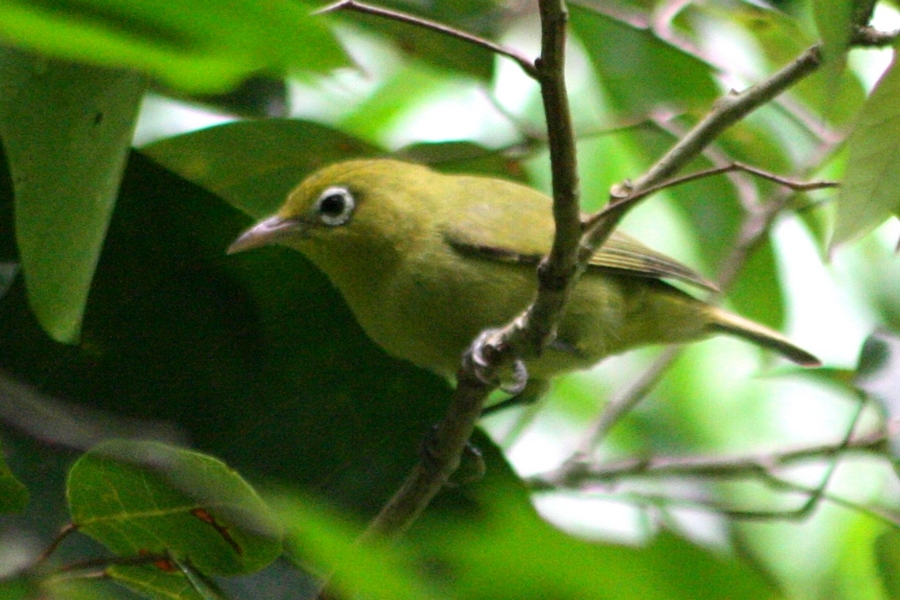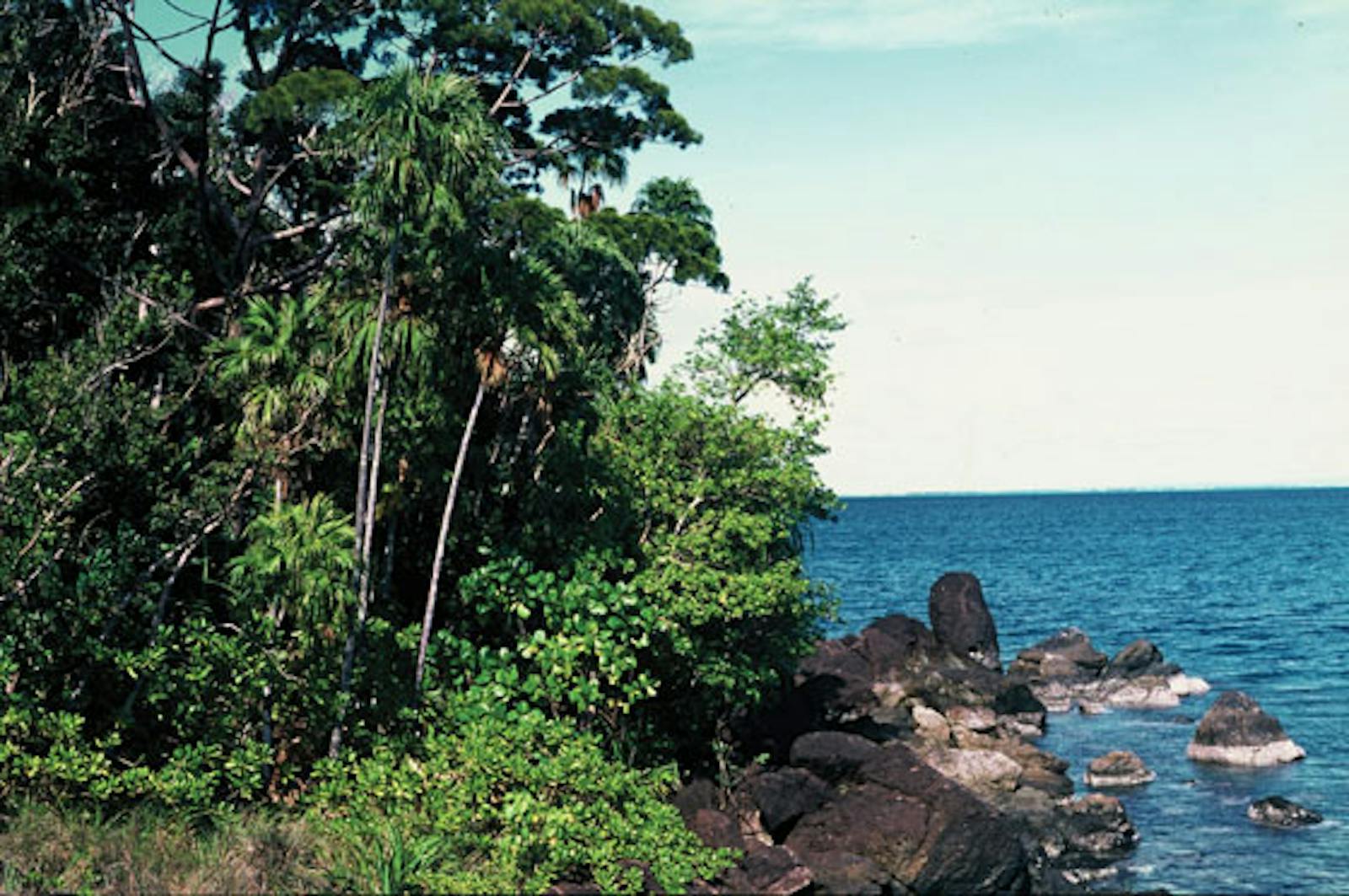Louisiade Archipelago Rainforests
The ecoregion’s land area is provided in units of 1,000 hectares. The conservation target is the Global Safety Net (GSN1) area for the given ecoregion. The protection level indicates the percentage of the GSN goal that is currently protected on a scale of 0-10. N/A means data is not available at this time.
Bioregion: New Guinea & Surrounding Islands (AU13)
Realm: Australasia
Ecoregion Size (1000 ha):
162
Ecoregion ID:
143
Conservation Target:
67%
Protection Level:
0
States: Papua New Guinea
Located far to the east of the island of New Guinea, the idyllic Louisiade Archipelago supports rain forests with many endemic plants and animals, including the Tagula butcherbird and honeyeater, as well as the Rossell Island blind snake. Misima, Sudest (or Tagula), and Rossel are the largest islands, volcanic in nature.

The flagship species of the Louisiade Archipelago Rainforests ecoregion is the Tagula honeyeater. Image credit: Dreamstime, Dirkr (License)
The Louisade Archipelago is a group of islands stretching over 160 kilometers between the Solomon and the Coral Sea. The climate of the Louisiade Archipelago is moist tropical, and the vegetation consists of rainforest, although some low-lying smaller islands receive less rainfall.
Trees that often occur in pure forest stands include Casuarina, Castanopsis, and Hopea. Drier forests support Pometia, Canarium, Anisoptera, Cryptocarya, Terminalia, Syzygium, Ficus, and Celtis. Forests are generally lower than in mainland New Guinea, perhaps due to poor soils and drier conditions.
The flora is distinctive, with several endemic ant plants (Rubiaceae) and an endemic screwpine species, as well as unique Bursera tree, ebony, and Hopea species. At least five frogs, two lizards, and one snake are endemic. Most of the 24 native mammal species are bats (eighteen) and rodent species; this includes the near-endemics Island tube-nosed fruit bat, Panniet naked-backed fruit bat, and St. Aignan's trumpet-eared bat. Five bird species are unique to the archipelago, including the rarely observed white-throated white eye.

Louisiade white-eye. Image credit: Wikipedia, Remi Bigonneau (CC by 4.0)
Much of Sudest Island and Pana Tinani are now covered in man-made grasslands and agricultural lands. Logging and wood collection continue to degrade remaining forests, and on Misima, gold and silver mining has been destructive in localized areas. There are no formal protected areas.
Priority conservation actions for the next decade
- Protect the forests from Mt. Riu eastward on Sudest and Mt. Sisa on Misima as they hold populations of endemic species.
- Protect sizeable forest patches from each of the main islands.
- Promote traditional management and community-based protected areas.
-
-
- Adams VM, VI Tulloch, HP Possingham. 2017. Land-sea conservation assessment for Papua New Guinea. A report on the work undertaken to fulfil the terms of the project Review and Integration of the Terrestrial and Marine Program of Works on Protected Areas. PNG CEPA, University of Queensland, Global Environment Facility, UNDP, Brisbane. 75 pp.
- Beehler BM, TK Pratt. 2016. Birds of New Guinea Distribution, Taxonomy, and Systematics. Princeton University Press, Princeton.
- Davis SD, VH Heywood, AC Hamilton (eds). 1994-1997. Centres of plant diversity: a guide and strategy for their conservation. World Wide Fund for Nature (WWF) and ICUN - World Conservation Union, Cambridge.
-
Cite this page: Louisiade Archipelago Rainforests. Ecoregion Snapshots: Descriptive Abstracts of the Terrestrial Ecoregions of the World, 2021. Developed by One Earth and RESOLVE. https://www.oneearth.org/ecoregions/louisiade-archipelago-rainforests/
-



